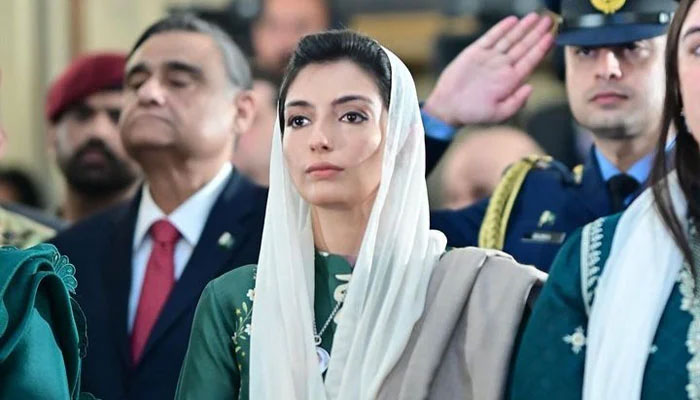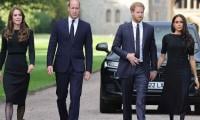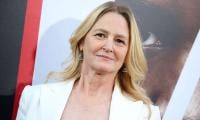Pakistan’s new face
Aseefa now assumes the role of daughter-first lady, and will shortly contest by-polls on NA-207 Nawabshah
Amidst the typical Pakistani post-election discourse and the same old lot assuming power at a time when widespread disillusionment with progress prevails, President Zardari's decision to appoint his younger daughter, Aseefa Bhutto-Zardari, 31, as the first lady comes as a relief.
The step highlights women’s empowerment in a country that, according to the World Economic Forum's 2022 Global Gender Gap Index, ranks 145th out of 146 countries. Following in the footsteps of her mother, who made history as the first woman elected to lead a Muslim-majority country, Aseefa now assumes the role of daughter-first lady.
In a landscape overshadowed by perpetual economic crisis and a lack of amenities for the vast majority of the population, coupled with widespread cynicism regarding the election results, critics may dismiss such decisions as "cosmetic." However, in a country where the median age is 23 and 64 per cent of the population is below the age of 31, with nearly half of the nation's population being women, Aseefa's appointment serves as a gentle stroke amidst the chaotic canvas of politics.
Pakistan has predominantly been governed by two generations: the Baby Boomer Generation (born 1946-1964) and Generation X (born 1965-1980). It is perhaps the right time for Millennials (born 1981-1996) and Generation Z (born 1996-2012) to assert themselves and carve out a space for new ideas and a healthier political culture.
However, to regain the faith of the country's youth-dominated population in democracy and a positive future, Aseefa must assert herself and cultivate a new political constituency that transcends stereotypical political rhetoric, election campaigns, and outdated manifestos. Despite comparisons with other young politicians and even her own siblings, Aseefa has demonstrated significant leadership talent.
In 2012, at the age of 19, she was appointed Pakistan's goodwill ambassador for polio eradication, a role many doubted a young woman of her age could effectively fulfill. During her tenure, she engaged with relevant officials, visited affected families, and spearheaded campaigns to combat the disease, building a substantial social and political following well before formally entering politics in November 2020.
The current political leadership, including figures such as Asif Ali Zardari (69), Nawaz Sharif (72), Shehbaz Sharif (70), Imran Khan (69), and Maulana Fazalur Rehman (69) are deemed too old to bring about significant change in Pakistan's political culture. A paradigm shift is inevitable, especially considering that Pakistan boasts one of the youngest populations in the world, with nearly 69 million young people.
However, due to the disproportionate focus on real-estate investment over industrialization and manufacturing, youth unemployment and economic hardship persist. This burgeoning youth population risks becoming akin to Zakooota Jin from the Urdu drama ‘Ainak Wala Jinn’, perennially asking, “Mujhay Kaam Batao. Mein Kia Keroon. Mein Kis ko Khaoon?” (Tell me what to do. What should I do and whom should I eat?)
Certainly, in the next decade, the current Baby Boomer Generation leadership will be replaced by individuals like Aseefa. But by then, it may be too late, as the nation will be dominated by Gen Alpha (born between 2010 and 2024) at the time of increasing use of artificial intelligence.
In January 2021, when I initiated the Clifton Urban Forest in Karachi, I was pleasantly surprised by the keen interest shown by Bilawal Bhutto-Zardari and Aseefa Bhutto-Zardari in this endeavour. Aseefa even dispatched her team to digitally document the project. With her charm and newfound prominence, Aseefa has the potential to become a mainstream environmentalist. Pakistan ranks as the third most polluted country in the world, with three key cities, including the commercial hub Karachi and the cultural capital Lahore, occupying top spots on the global air quality index.
Pakistan is grappling with a dwindling forest cover exacerbated by the energy crisis, water contamination, and the encroachment of fertile agricultural land by the expanding real estate sector. These challenges are reshaping the country's socio-economic landscape. Furthermore, Pakistan's enterprising youth represents an untapped resource. With aging populations in Europe, Japan, and the Northern Hemisphere, there is a growing demand for young workers, a supply that Pakistan's human capital can fulfill.
Aseefa, as a young and charismatic figure, could serve as a conduit, opening doors for Pakistani workers to various parts of the world. The success story of young Nobel laureate Malala Yousafzai illustrates the potential of Pakistani youth on the global stage. Aseefa Bhutto-Zardari could follow suit, becoming a goodwill ambassador for Pakistan's human capital and environmental conservation.
The writer is an expert on climate change and development and founder of the Clifton Urban Forest. He tweets/posts @masoodlohar and can be reached at: mlohar@gmail.com
-
 Piers Morgan In Hospital: Here's Why
Piers Morgan In Hospital: Here's Why -
 IPhone 18 Pro Leaked: New Design Reveals Radical Corner Camera Layout
IPhone 18 Pro Leaked: New Design Reveals Radical Corner Camera Layout -
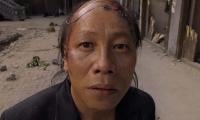 Kung Fu Legend Siu-Lung Leung Passes Away At 77
Kung Fu Legend Siu-Lung Leung Passes Away At 77 -
 Kim Kardashian To Remove Ex Kanye West From Her Kids' Names
Kim Kardashian To Remove Ex Kanye West From Her Kids' Names -
 Queens Mother Arrested After Abducting Child From Court-ordered Visit
Queens Mother Arrested After Abducting Child From Court-ordered Visit -
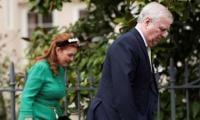 Sarah Ferguson Ready To ‘spread Her Wings’ After Separating From ‘disgraced’ Andrew
Sarah Ferguson Ready To ‘spread Her Wings’ After Separating From ‘disgraced’ Andrew -
 Finn Wolfhard Shares How Industry Views Him Post 'Stranger Things'
Finn Wolfhard Shares How Industry Views Him Post 'Stranger Things' -
 Dylan O'Brien Gets Nostalgic After Reunion With Old Friend
Dylan O'Brien Gets Nostalgic After Reunion With Old Friend -
 UK Doctors Warn Screen Time Is Harming Children’s Health
UK Doctors Warn Screen Time Is Harming Children’s Health -
 Meghan Markle To Get Police Protection In UK If Travelling With Archie, Lilibet
Meghan Markle To Get Police Protection In UK If Travelling With Archie, Lilibet -
 Spencer Pratt Expresses Hope For Taylor Swift, Travis Kelce's Wedding Invite
Spencer Pratt Expresses Hope For Taylor Swift, Travis Kelce's Wedding Invite -
 Evan Peters Makes Unexpected Confession About 'American Horror Story' Season 13
Evan Peters Makes Unexpected Confession About 'American Horror Story' Season 13 -
 Kentucky Grandmother Arrested After Toddlers With Broken Skulls, Ribs
Kentucky Grandmother Arrested After Toddlers With Broken Skulls, Ribs -
 European Space Agency Hit By Cyberattack, Hundreds Of GBs Data Leaked
European Space Agency Hit By Cyberattack, Hundreds Of GBs Data Leaked -
 Elon Musk’s XAI Launches World’s First Gigawatt AI Supercluster To Rival OpenAI And Anthropic
Elon Musk’s XAI Launches World’s First Gigawatt AI Supercluster To Rival OpenAI And Anthropic -
 Google Adds On-device AI Scam Detection To Chrome
Google Adds On-device AI Scam Detection To Chrome
